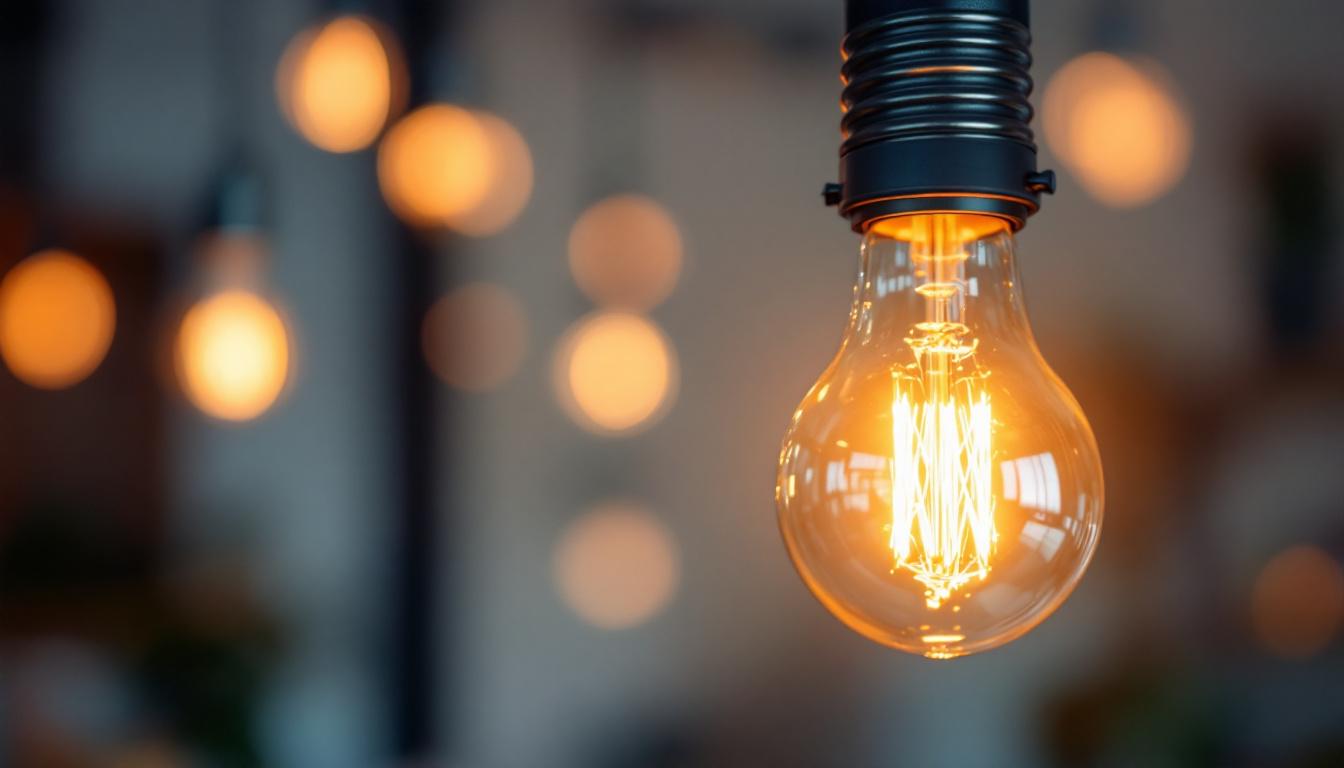
Lighting contractors often encounter the 120V 60W light bulb in various residential and commercial projects. This type of bulb is a staple in the lighting industry, known for its versatility and efficiency. However, despite its commonality, there are several aspects that contractors may overlook when working with these bulbs.
The 120V 60W light bulb typically refers to an incandescent bulb, which has been a go-to choice for many applications. Its warm light quality and compatibility with standard fixtures make it a popular choice among homeowners. Yet, as technology evolves, understanding the nuances of these bulbs becomes increasingly important for contractors aiming to provide the best solutions for their clients.
These bulbs are often used in a variety of settings, from residential to commercial spaces. In homes, they illuminate living rooms, bedrooms, and kitchens, providing a cozy atmosphere. In commercial environments, they can be found in retail spaces, offices, and restaurants, where ambiance plays a crucial role in customer experience.
Contractors should be aware of the specific needs of each application. For example, while a warm light may be ideal for a living room, a cooler light might be more suitable for an office environment where productivity is key. Understanding the context in which these bulbs will be used can help in making informed decisions. Additionally, the placement of these bulbs can significantly impact the overall lighting design; strategically positioning them can enhance aesthetic appeal and functionality, ensuring that every corner of a space is well-lit and inviting.
While 120V 60W incandescent bulbs are widely used, they are not the most energy-efficient option available. With the rise of LED technology, many contractors are now recommending LED alternatives that consume significantly less power while providing the same light output. This shift not only benefits the environment but also helps clients save on their energy bills.
When discussing options with clients, it’s essential to highlight the long-term savings associated with switching to LED bulbs. Although the initial investment may be higher, the reduced energy consumption and longer lifespan of LEDs can lead to substantial cost savings over time. Furthermore, it’s worth noting that many LED products now come with dimming capabilities, allowing for greater control over lighting levels and further enhancing energy efficiency. As contractors, staying informed about the latest advancements in lighting technology can empower you to offer tailored solutions that meet both the aesthetic and functional needs of your clients, ensuring they receive the best possible value for their investment.
Lighting contractors must have a solid understanding of the technical specifications associated with 120V 60W light bulbs. This includes wattage, voltage, lumens, and color temperature. Each of these factors plays a critical role in the overall performance and suitability of the bulb for a particular application.
For instance, understanding lumens is crucial for determining the brightness of the bulb. A 60W incandescent bulb typically produces around 800 lumens. However, when switching to LED options, contractors should ensure that the lumen output is comparable to meet the client’s expectations for brightness.
Color temperature is another important specification that contractors often overlook. Measured in Kelvin (K), color temperature affects the ambiance of a space. A bulb with a lower color temperature (around 2700K) emits a warm, inviting light, while a higher color temperature (5000K and above) produces a cooler, more clinical light.
When selecting bulbs for different environments, contractors should consider the psychological effects of color temperature on occupants. For example, warm light is often preferred in residential settings for its comfort, whereas cooler light may be more appropriate in task-oriented spaces like offices or workshops.
Another technical aspect to consider is dimmer compatibility. Not all 120V 60W light bulbs are compatible with dimmer switches, especially when it comes to newer LED options. Contractors should verify that the bulbs they recommend can function properly with existing dimmer systems to avoid flickering or reduced lifespan.
When installing dimmable bulbs, it’s advisable to use compatible dimmers that can handle the specific wattage and type of bulb. This not only ensures optimal performance but also enhances the overall lighting experience for the end-user.
Proper installation of 120V 60W light bulbs is crucial for ensuring safety and performance. Contractors should follow best practices to minimize risks and maximize the lifespan of the bulbs.
One common oversight is not checking the fixture’s compatibility with the bulb type. For instance, using a bulb with a higher wattage than the fixture is rated for can lead to overheating and potential fire hazards. Always refer to the manufacturer’s specifications to ensure safe usage.
Different fixtures may have unique requirements regarding bulb size, shape, and wattage. For example, recessed lighting often requires specific bulb types to fit properly and function effectively. Contractors should assess the fixture design and ensure that the selected bulb meets these requirements.
Additionally, the placement of fixtures can impact the effectiveness of the lighting. Poorly positioned fixtures may lead to shadows or uneven lighting, which can detract from the overall aesthetic of the space. Careful planning and consideration of fixture placement can enhance the quality of light throughout the area.
Safety should always be a top priority during installation. Contractors should ensure that power is turned off before replacing any bulbs to prevent electrical shock. Using insulated tools and wearing appropriate personal protective equipment can further enhance safety during the installation process.
Moreover, it is essential to dispose of old bulbs properly. Incandescent bulbs can be disposed of in regular trash, but contractors should be aware of local regulations regarding the disposal of other types of bulbs, such as CFLs or LEDs, which may contain hazardous materials.
Effective communication with clients is vital for ensuring they understand the options available to them. Many homeowners may not be aware of the differences between various bulb types, and contractors have the opportunity to educate them on the benefits of choosing energy-efficient lighting solutions.
By explaining the advantages of LED bulbs over traditional incandescent options, contractors can help clients make informed decisions that align with their energy-saving goals. Providing clear information about the expected lifespan, energy consumption, and light quality can empower clients to choose the best lighting solutions for their needs.
There are several misconceptions surrounding 120V 60W light bulbs that contractors should be prepared to address. One common belief is that all bulbs provide the same quality of light. In reality, the technology used in manufacturing bulbs can significantly impact light quality, energy efficiency, and lifespan.
Another misconception is that higher wattage always means brighter light. This is not necessarily true, as lumens are the true measure of brightness. Educating clients on these distinctions can help them appreciate the value of investing in quality lighting solutions.
Every client has unique preferences and requirements when it comes to lighting. Offering a range of options, including different bulb types, color temperatures, and dimming capabilities, allows contractors to tailor solutions to meet individual needs.
By presenting various choices, contractors can help clients visualize how different lighting options will impact their space. Utilizing samples or mock-ups can be an effective way to demonstrate the differences in light quality and ambiance, ultimately leading to more satisfied customers.
The lighting industry is continuously evolving, with new technologies emerging that can enhance the performance and efficiency of lighting solutions. Contractors should stay informed about these trends to remain competitive and provide clients with the best options available.
One significant trend is the increasing adoption of smart lighting systems. These systems allow users to control their lighting remotely, adjust brightness, and even change color temperatures through smartphone applications. Contractors who understand how to integrate smart lighting into their projects will be better positioned to meet the demands of tech-savvy clients.
As sustainability becomes a more significant concern for consumers, contractors should be prepared to discuss the environmental impacts of their lighting choices. Energy-efficient bulbs, such as LEDs, not only reduce energy consumption but also contribute to lower carbon footprints.
Contractors can enhance their value proposition by emphasizing the importance of sustainable lighting solutions. This includes discussing the benefits of using recyclable materials and energy-efficient technologies, which can resonate with environmentally conscious clients.
Regulations surrounding energy efficiency and lighting standards are continually changing. Contractors must stay up-to-date with local and national codes to ensure compliance and avoid potential penalties. This knowledge not only protects the contractor but also instills confidence in clients who are investing in their services.
By proactively adapting to these changes, contractors can position themselves as industry leaders and trusted advisors for their clients, ensuring that they are always offering the most current and compliant solutions.
The 120V 60W light bulb remains a fundamental component in the lighting industry, yet it is essential for contractors to look beyond its basic functionality. By understanding the technical specifications, installation best practices, and emerging trends, contractors can provide superior service and solutions to their clients.
Education and communication play a critical role in ensuring that clients are informed and satisfied with their lighting choices. By addressing misconceptions and offering tailored options, contractors can enhance the client experience and build lasting relationships.
As the lighting industry continues to evolve, staying informed about new technologies and sustainability practices will be vital for contractors. Embracing these changes will not only benefit their business but also contribute to a more energy-efficient and environmentally friendly future.
Ready to elevate your lighting solutions and give your clients the best value? Look no further than LumenWholesale for all your lighting needs. Our extensive selection of spec-grade lighting products is designed to meet the highest industry standards, ensuring you deliver reliable and high-performance lighting for every project. Say goodbye to inflated markups and hello to unbeatable wholesale prices, free shipping, and the convenience of bulk buying. Don’t compromise on quality or cost—choose LumenWholesale and make your lighting installations shine. Discover our range and take advantage of the best value in wholesale lighting by visiting Wholesale Lighting at the Best Value today.

Explore the often-overlooked aspects of lighting design that even seasoned contractors miss.

Discover expert strategies for lighting contractors to effectively utilize 4200 Kelvin light bulbs.

Discover the essential insights on Bulb T Type lighting that every contractor needs to know.

Discover the essential insights every lighting contractor needs about LED wall panel lights.